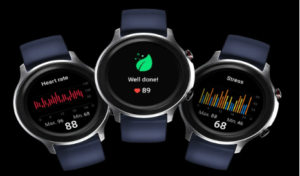Many industrial applications such as hydraulics, pneumatics, pumps, compressors, air conditioning, refrigeration, and automation use pressure sensors. A pressure sensor is a crucial tool to ensure the smooth functioning of industrial applications. They provide the system pressures are within acceptable ranges and ensure the operational reliability of the applications.
Types of Pressure Sensors
A wide range of pressure sensors is available in the market. These can be broadly classified as analog and digital sensors. Depending on the installation and system requirements, you can opt for an analog or digital pressure sensor. However, these sensors can also be categorised based on their measurement type, sensing theory, the output signal, and the media. Some other classifications also establish if they are MEMS sensors or if they are medically approved.
So, the pressure sensors can be categorised into three main measurement modes:
- Absolute
- Gauge
- Differential
Let us look into them in detail.
Absolute
An absolute pressure sensor uses zero or a vacuum as the reference point. While one side of the sensor is exposed to the measuring medium, the other side is sealed to create a vacuum.
Gauge
A gauge sensor reads the pressure relative to atmospheric pressure. In this sensor, one side is connected to a system such as a suction pump, while the other side vents to the atmosphere. While using a gauge pressure sensor, it is essential to ensure that the vent hole is unobstructed.
Differential
A differential pressure sensor indicates the difference in the pressure experienced at two exposed ports. Typical uses of a differential pressure sensor include measuring liquid or gas flow in pipes, ducts or detecting a blockage or seized valve.
Sensing principles
The sensing principle used by a sensor influences its accuracy, reliability, measurement range, and compatibility with the medium being measured. There are five different ways in which mechanical displacement takes place inside a sensor when it is turned into an electrical output:
- Resistive
- Capacitive
- Piezoelectric
- Optical
- MEMS
Resistive – In this, the sensors change the electrical resistance of a strain gauge bonded to the diaphragm exposed to the pressure medium.
Capacitive – A capacitive sensor displays the capacitance change when one plate deflects under applied pressure. It can be susceptible and measure pressures below 10mbar while withstanding large overloads. However, a constraint on materials, joining, and sealing requirements can limit its applications.
Piezoelectric – These sensors utilise the piezoelectric property of materials such as quartz to generate a charge on the surface where pressure is applied. The charge’s magnitude is proportional to the applied force, and the polarity indicates its direction. As the charge accumulates and dissipates quickly with the changing pressure, it facilitates fast-changing dynamic pressure measurements.
Optical – These use interferometry to measure pressure-induced changes in optical fibre. Electromagnetic interferences do not obstruct them, which means they can be used in noisy environments or radiography equipment. They are created with tiny components or MEMS technology. It is medically safe for implantation or topical use. It can also measure the pressure at various points along with the fibre.
MEMS – The Micro-Electro-Mechanical System or MEMS sensors have an in-built piezo or capacitive pressure-sensing mechanism on the silicon at micron-level resolution. Co-packaged signal-conditioning electronics transform the small-magnitude MEMS electrical output to an analog or digital signal.
A wide range of individual sensor types are now available in the marketplace. They offer so much flexibility that the design engineers can identify a suitable sensor for almost any application.
If you are looking for reliable pressure sensors at reasonable prices, click here.





More Stories
Benefits of Hiring a Salesforce Development Company
Benefits of Ventilator Machines in Healthcare
Applying GST Calculator for Clear Financial Insights